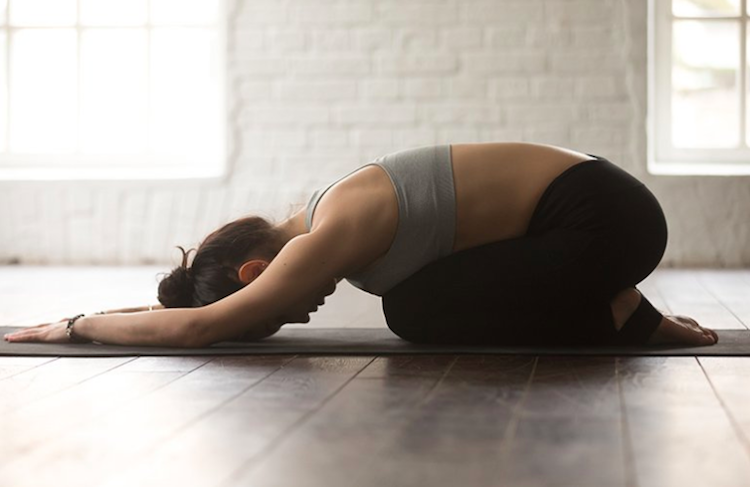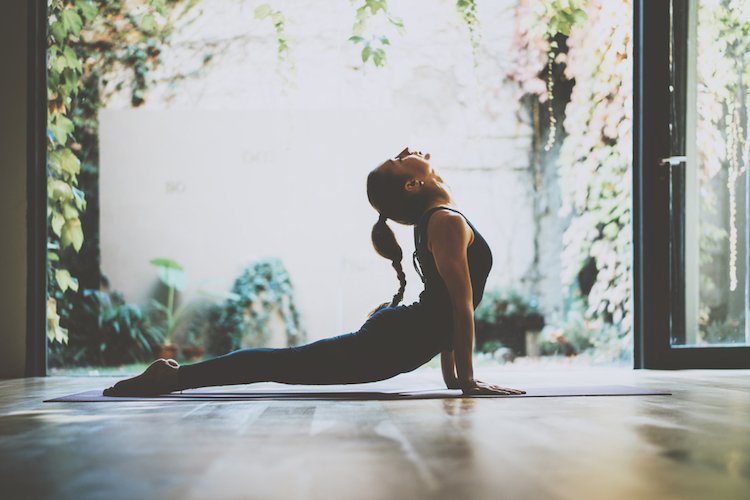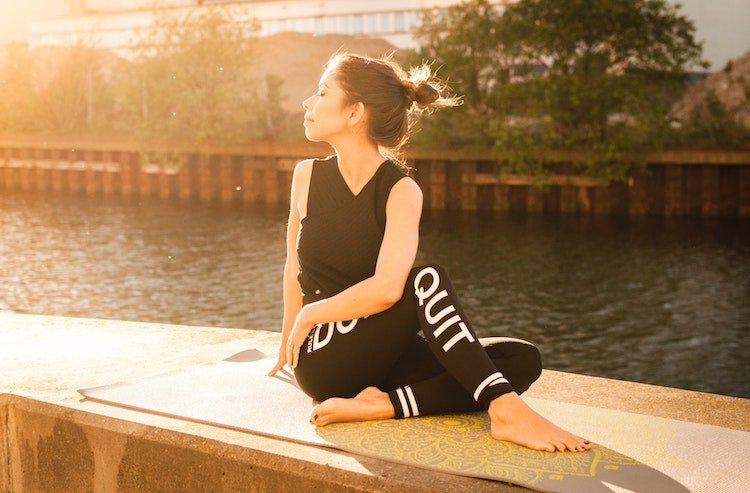Although Sienna Saint-Cyr tried many types of yoga, she couldn't find her perfect pairing. Then she discovered trauma sensitive yoga and everything clicked into place. Here's her take on this healing practice.
After hearing how healing and peaceful yoga can be, I developed a real interest in it. I've spent a lot of time going to different gyms and trying yoga videos I purchased or found on YouTube, but none gave me the peacefulness I was promised. Sure, they stretched my body, but there wasn't the calm afterwards that I desperately desired. It all felt so body-specific. For me, this was a problem, and kept me from fully embracing the healing aspects of having a daily yoga practice.
One day I attended a class with a friend while out of town and my entire view on yoga changed. The instructor did a lot more with focusing on proper breath through the movements as opposed to the poses themselves, and I left feeling so euphoric and relaxed. The sensation stuck with me for hours, and as a person with high anxiety and Complex PTSD, this feeling of peace and relaxation was more than welcome.
Discovering trauma sensitive yoga
I went home and tried to find a class like that in my area, but the price was either too high or I couldn't find what I was looking for. Because of my PTSD, I don’t do well with people touching me or larger classes. So, my therapist suggested I try trauma-sensitive yoga (TSY) — a type of yoga focused on people with mental trauma — created by David Emerson. My therapist sent me to a nearby studio that taught Emerson's methods, then helped me get a scholarship. For the next three months, my world changed for the better.

Bend yourself better with trauma-sensitive yoga
At first, I thought I’d hate it. But trauma sensitive yoga was different from other types of yoga such as compassion yoga or gratitude yoga. The instructor, Morgan Vanderpool, didn't do fancy poses or show off like other teachers I’d seen. In fact, I learned very few actual yoga poses during the class. It was all about focusing on breath and being present in our bodies.
One of the ways she’d keep us present is to tell us to focus on how it feels when our palm touches the floor. Or she’d ask us to be aware of what parts of our body were really feeling the pose, then to breath into that area. I learned quickly that much of the reason I’d hated yoga was because I hadn't been truly present. My mind was wandering constantly, so I never practised properly.
“Trauma-sensitive yoga was different from other types of yoga. It was all about focusing on breath and being present in our bodies.”
I also felt no pressure to take part in poses that were triggering for me, a problem I’d had in many other classes. Nor did I feel the need to talk to others. The class I attended had a maximum of eight people per session and we were able to leave at any time if we needed to.
My trauma sensitive yoga instructor also had experience working in therapy, so she knew how to respond to my triggers. She was warm, always calm and used a quiet voice, and she kept my focus on listening to my body.
Respecting my body and listening to it
Respecting my body is difficult for me. I was so used to disassociating from it that I often ignored the pain in my body. I even ignored tiredness, hunger, thirst, and desire. My instructor helped me to be present in my body without fear. In fact, my first class with her helped me realize how little I was present in my body or in the moment. Her constant reminder to feel my contact points — hands on floor, feet on floor, butt on floor, pressure in each location — kept me re-engaging when I’d drift.
I remember after the first session, lying back on the floor and as I stared up at the ceiling, I felt like I could drift away in that moment. I’d gone into the class full of tension and fear, and in that moment I didn't want to get up. I wanted to stay there and feel all of that release.
The feeling was so strong that when I left the studio I called one of my partners because I felt too dizzy to drive! He talked to me about my experience and how I felt after coming through it and all I could do was cry. I had literally released so much that I didn't want to stop. The more I let go of, the lighter I felt.
Stretch yourself: trauma sensitive yoga can heal
During the session, I let my body do what it needed. I pushed as far as I felt I should, got into positions that my body felt good in, and when I got overwhelmed, I sat in silence until I felt I could rejoin the group. I honoured my body, and in doing so, took my first steps toward respecting my body and healing the trauma that I’d stored there most of my life. The class changed me.
Now, I can participate in many types of yoga and feel the benefits in a physical and mentally calming way. I even use the methods when I get triggered or full of stress. I stop, focus on my feet touching the ground, the pressure in my leg muscles, the tension in my back, then I breath it out. The more I've practised this, the more I've come to understand that in order to truly be happy in life, I needed to be present all the time.
“I learned very few actual yoga poses during the class. It was all about focusing on breath and being present in our bodies.”
Trauma-sensitive yoga started me on my path to finding and creating my own practice. Some days I incorporate gentle dance. Other days I do more meditation than movement. It just depends on the day and what my needs are in that moment. And that’s what being present means. Honouring the moment.
Deep stuff: breathe into your bodily tension during trauma-sensitive yoga
While I've still had small bouts of depression or moments of stress and anxiety, I now have the tools to release those negative emotions and get back on track with being present. When I'm living in the moment, I'm not stressed. I'm not focused on the tasks that need doing in the following week or the annoying incident that happened last week. I'm focused on the moment. When I'm present, I'm happy.
Trauma sensitive yoga helped me achieve this. I can’t recommend it enough, no matter your level of trauma or PTSD. Happiness is achievable regardless of our circumstances when we are in the moment and not allowing ourselves to live elsewhere! ●
Images: colourbox.com
Written by Sienna Saint-Cyr
 Sienna Saint-Cyr is an author, advocate, and the founder of SinCyr Publishing. She speaks at conventions, workshops, and for private gatherings on the importance of having a healthy body image, understanding enthusiastic consent, using sexuality to promote healing, navigating diverse or non-traditional relationships, having Complex PTSD, and more. Sienna loves sharing her journey of healing and finding happiness with her readers. Along with writing erotica and romance, Sienna speaks at conventions, workshops, and for private gatherings on such sex-positive topics as a healthy body image, using sexuality to promote healing, and navigating diverse or non-traditional relationships. She writes for several websites. Find out more.
Sienna Saint-Cyr is an author, advocate, and the founder of SinCyr Publishing. She speaks at conventions, workshops, and for private gatherings on the importance of having a healthy body image, understanding enthusiastic consent, using sexuality to promote healing, navigating diverse or non-traditional relationships, having Complex PTSD, and more. Sienna loves sharing her journey of healing and finding happiness with her readers. Along with writing erotica and romance, Sienna speaks at conventions, workshops, and for private gatherings on such sex-positive topics as a healthy body image, using sexuality to promote healing, and navigating diverse or non-traditional relationships. She writes for several websites. Find out more.




Join the conversation
You are posting as a guest. If you have an account, sign in now to post with your account.
There are no comments to display.